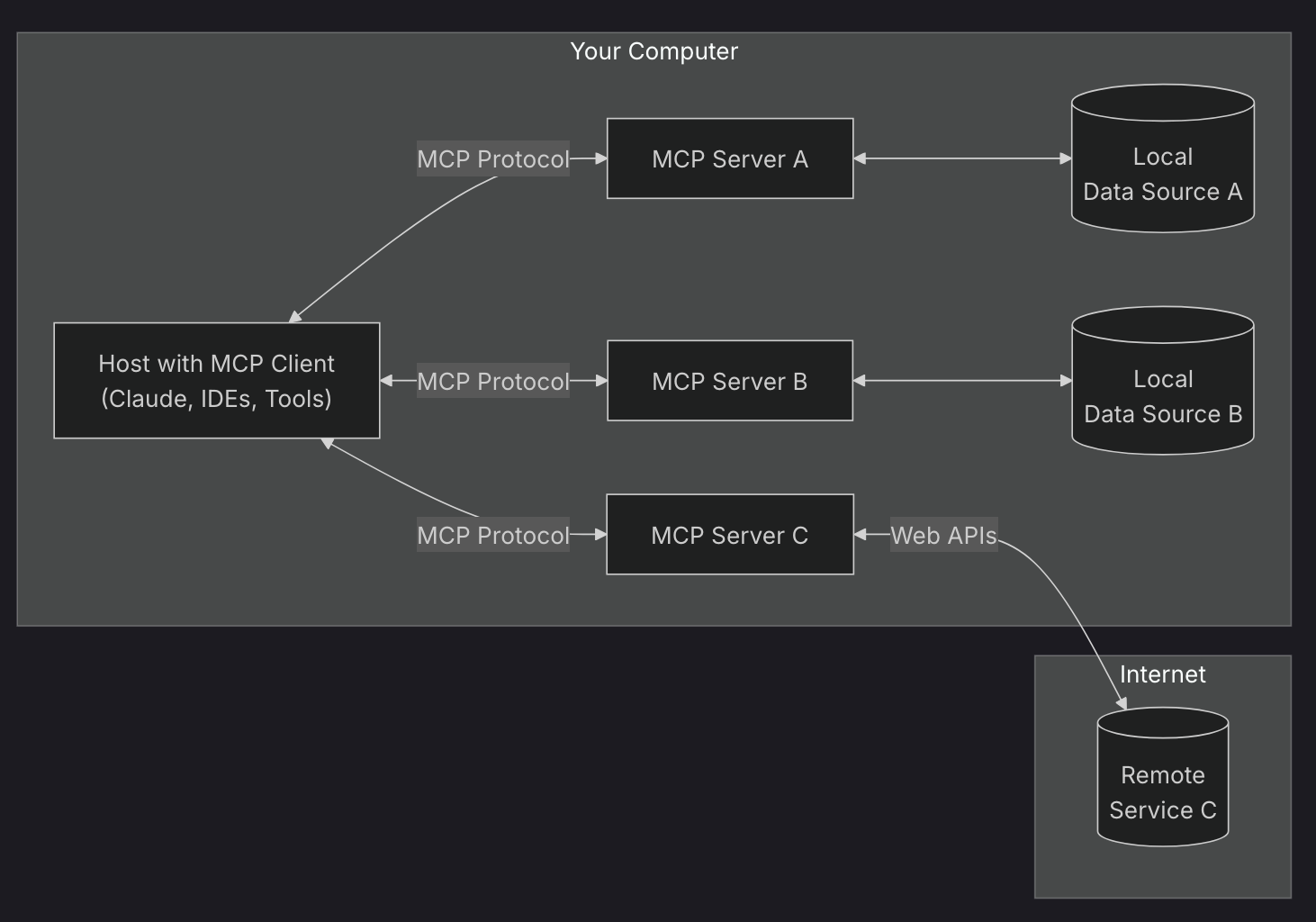Ever tried explaining to your AI model where to find your files? It's like trying to give directions to a tourist who speaks a different language, has no map, and thinks your city is laid out like a game of Tetris. Enter the Model Context Protocol (MCP) – the universal translator your AI has been dreaming of (if AIs could dream, that is).
Why We Needed MCP: A Brief History of AI's Communication Crisis
Picture this: You're at a fancy restaurant. The chef (that's your AI model) is world-class and can cook anything. But there's a catch – every ingredient (your data) is in a different type of container, with a different lock, and the keys are scattered across town. That's basically how AI models have been dealing with data access. Not exactly a recipe for success, right?
Traditionally, AI models have been like hermits living in their own little caves, each speaking their own unique dialect. Want them to access a database? Write a custom connector. Need them to read your local files? Another custom solution. Want them to check the weather? You guessed it – more custom code. It's like having to build a new type of phone every time you want to call a different person. Not very efficient, is it?
Enter MCP: The Universal Translator We've Been Waiting For
Think of MCP as the USB-C of the AI world (except it won't take three tries to plug it in correctly). It's a standardized way for AI models to interact with... well, pretty much anything. Here's how it works, explained with minimal jargon and maximum clarity:
The Three Musketeers of MCP:

-
MCP Hosts (The Party Planners)
- These are your AI applications, like chat interfaces or development environments
- They're basically saying, "Hey, I've got an AI here who needs to access some stuff!"
-
MCP Clients (The Diplomatic Corps)
- These are the smooth talkers that maintain connections
- Think of them as universal translators who can speak both "AI" and "everything else"
-
MCP Servers (The Knowledge Keepers)
- These expose specific capabilities to your AI
- Whether it's accessing your files, checking the weather, or ordering pizza (okay, maybe not pizza yet)
The Real-World Context: Why This Matters
Before MCP, integrating AI models with external data sources was like trying to build a house where every room was designed by a different architect who didn't talk to the others. You might end up with a kitchen in the attic and a bathroom in the garage. Not ideal.
Here's what typically happened:
- Developer needs AI to access local files
- Developer writes custom integration
- Developer needs AI to access weather API
- Developer writes another custom integration
- Developer slowly loses sanity
- Developer's rubber duck debugging companion files for divorce
Getting Started with MCP (No PhD Required)
Ready to join the MCP party? Here's your ticket to ride:
For the Curious Newcomers:
Start by exploring pre-built MCP servers in existing applications. It's like using training wheels – perfectly acceptable and nobody's judging. Check out more examples on the MCP Server page.
For the Tech Enthusiasts:
Try building a simple MCP server that does one thing well. Maybe start with something fun, like a server that tells dad jokes. (Because if your AI is going to access external data, it might as well have a sense of humor.)
The Future is Bright (And Properly Integrated)
As we look ahead, MCP represents more than just another technical standard – it's a fundamental shift in how AI models interact with the world around them. It's like we're finally teaching all our AI assistants to speak the same language, use the same type of coffee machine, and agree on whether pineapple belongs on pizza.
Remember: The goal isn't just to make AI models smarter – it's to make them more accessible, more useful, and maybe, just maybe, a little more fun to work with.
💡 Note: This blog post is based on the excellent article "Introducing the Model Context Protocol" and documentation published by Anthropic. All images and core concepts have been adapted from the original work, with the goal of making these ideas more accessible to a broader audience. A big thank you to the Anthropic team for sharing this!
For those interested in diving deeper into the technical details and implementation, I highly recommend checking out this website: Model Context Protocol